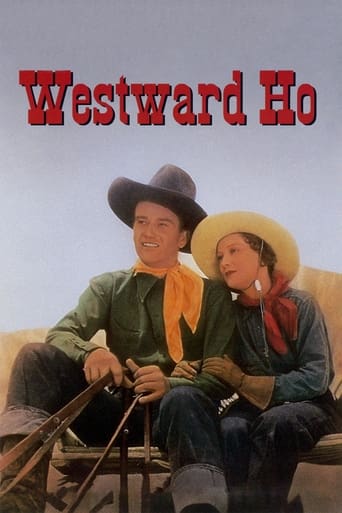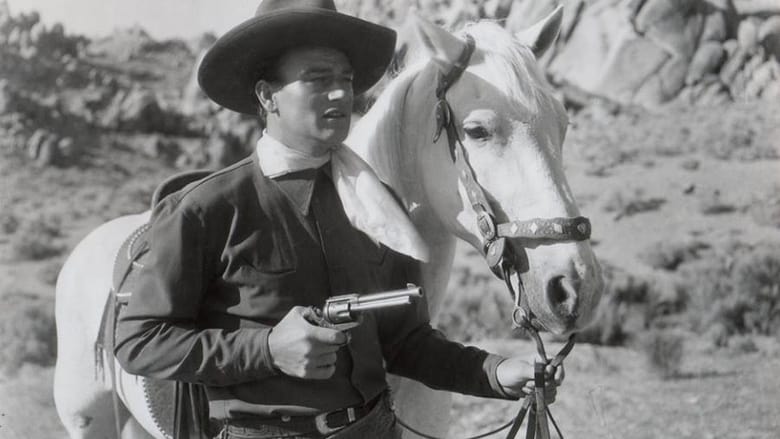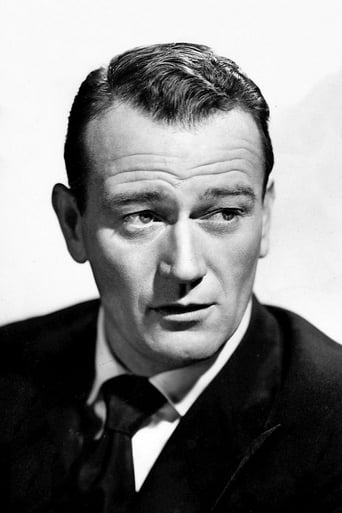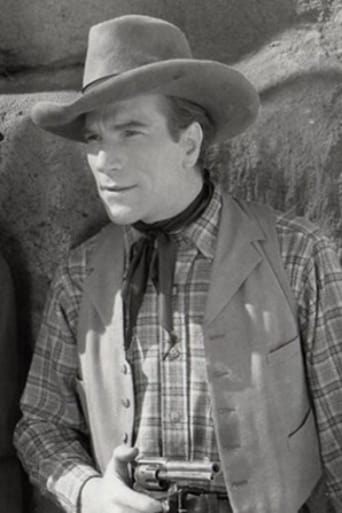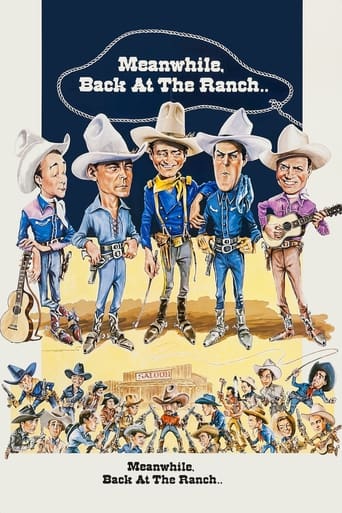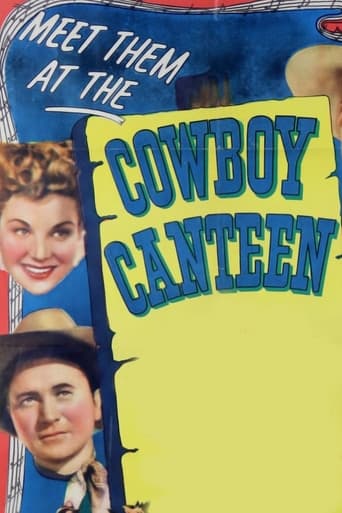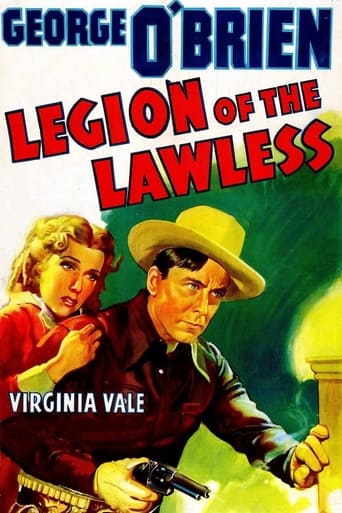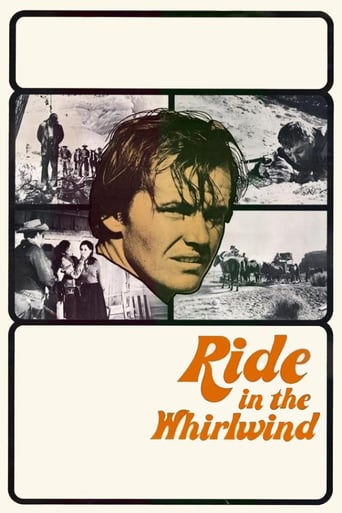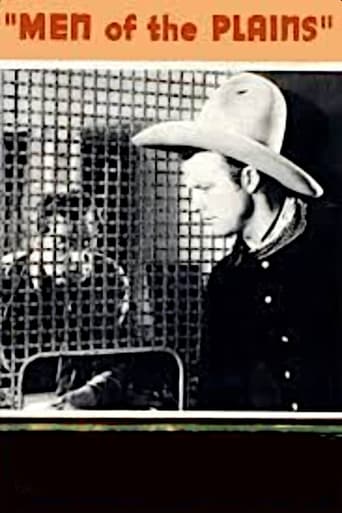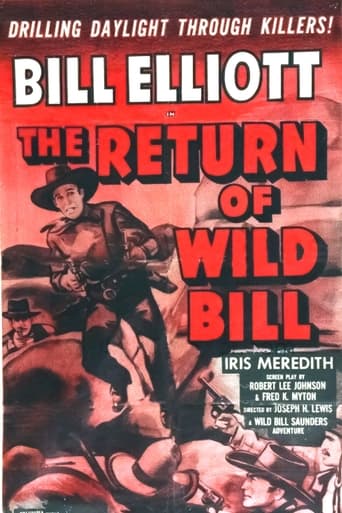Westward Ho (1935)
Ballard's trail jumpers attack the Wyatt Company wagon train, killing young John's parents and kidnaping his brother, Jim. In post-Civil War California, John Wyatt, now a man, pulls together a vigilante posse, The Singing Riders, who all ride white horses, dress alike, and ride the trails singing and rounding up outlaw gangs. Meanwhile, John is ever on the lookout for the gang that murdered his parents As a youngster John Wyatt saw his parents killed and his brother kidnapped. On a wagon train heading West he meets his brother who is now a spy for the gang which originally did the dirty work. He and his brother both fall for Mary Gordon When Ballard and his men attack the Wyatt wagon train, they kill all except two young brothers. Twelve years later one brother John has organized a vigilante group. The other brother Jim is now part of Ballard's gang and the two are destined to meet again
Watch Trailer
Cast


Similar titles
Reviews
Powerful
Good story, Not enough for a whole film
The movie's neither hopeful in contrived ways, nor hopeless in different contrived ways. Somehow it manages to be wonderful
The film's masterful storytelling did its job. The message was clear. No need to overdo.
. . . the New Founding Fathers who "purged" the American West of the "lawlessness" rampant in the mid-1800s due to the influx of murderers and rapists across the Mexican border. This very first "Republic" Picture actually spells out this now-politically incorrect message on-screen as WESTWARD HO opens. The first scene shows Real Life U.S. Vigilante-in-Chief John Wayne (whom director Vincent Sherman has testified would ride up and down Hollywood Boulevard on a motorcycle with his henchman Ward Bond, clubbing members of Tinseltown's LGBTQ community with ball bats, as if these victims were Canadian baby seals, secure in their belief that they'd earn "Hero Buttons" for ridding L.A. of "bad influences") being told by government officials that there was no tax money available to fund Amateur Night Vigilante Attacks. This doesn't deter Wayne's character "John" from rounding up every tenor and white horse in California in a bizarre plot to sing the crooks to death. Unlike these benighted 19th and 20th Century unfortunates, we of the Enlightened 21st Century have History's Greatest Deal-Maker, President-Elect Trump, to force Mexico to build a great protective wall at its own expense which probably will be patrolled by Vigilantes who will shoot first--then sing!
When Republic Pictures was formed in 1935,Trem Carr's Lone Star western group was included along with star John Wayne. Thus began Wayne's turbulent relationship with the studio which lasted until 1951.The first thing that you will notice when watching "westward Ho!" for the first time is the large cast of extras particularly in the riding scenes (the veritable cast of thousands). Quite a feat for the newly formed "B" studio considering that the Great Depression was still ongoing.Anyway, the plot in that oft used good brother vs. bad brother theme. John an d Jim Wyatt are part of a wagon train that is ambushed by rustler Ballard (Jack Curtis)and his gang, which includes veteran stuntman/actor Yakima Canutt. The boys parents are killed and John is left for dead while brother Jim is "adopted" by Ballard.Fast forward a few years and John Wyatt has grown up to be John Wayne and Jim, Frank McGlynn Jr. Jim has become an outlaw within Ballard's gang. John meanwhile has organized a vigilante group known as "The Singing Riders" to track down all outlaw gangs as he searches for his lost brother.Along the way, John joins up with Lafe Gordon's (Jim Farley)cattle drive in the hopes of catching Ballard and Co. Well, as luck would have it, Gordon has a comely young daughter Mary (Sheila Mannors) with whom John strikes up a relationship. To complicate matters, Jim also joins Gordon's group unbeknownst that his brother John is there. Finally the brothers discover who each of them is and..............................John Wayne had previously portrayed "Singin' Sandy) in a couple of his Lone Star westerns. So as the leader of the "Singing Riders" he gets to sing (dubbed of course) a forgettable tune to the heroine. A singing cowboy John Wayne was not.The film is enhanced by the presence of Yakima Canutt who staged many of the film's stunts including several horse falls and a spectacular "wagon over the cliff" scene. Considering the large cast of riders, this could not have been no easy task.Other recognizable faces in the cast were Glenn Strange, Earl Dwire (who had appeared in several of Wayne's "Lone Stars") and Lloyd Ingraham.Worth a look.
This wonderful example of the early B western is tarnished by some pitiable horse falls that would not be tolerated in today's films. Two scenes in particular show the poor animals somersaulting and going down in a horrendous heap, sometimes on top of one another. Even knowing that the movie is over 70 years old; the sight of the poor animals in such distress still made me heart sick. The Running W appears to have been used liberally in this picture, which is otherwise well acted and produced. John Wayne gives an excellent performance along with a strong supporting cast, while the Owens Valley and Alabama Hills outside Lone Pine provide a realistic backdrop to the story.
Newborn Republic Pictures utilizes the solid directoral ability of Robert Bradbury, and the presence of John Wayne along with Yakima Canutt and his troupe of stuntriders to produce this strongly scripted film of 1860s vigilante efforts to rid the Far West of outlaw bands that were involved in widespread robbery and cattle rustling. Bradbury, whose skill with Westerns dates back to the early silent period, directs and edits with a solid awareness of suspense, building his typically short scenes with sparse and, at times, stilted dialogue and an eye for proper cast placement which makes excellent use of defined personalities such as Wayne, Frank McGlynn Jr., and Glenn Strange, and gives particular value to the hard-riding stunt performers, who are splendid throughout this well-made (and musical) adventure filmed in California's Owens Valley, at the base of the Sierra Nevada.

